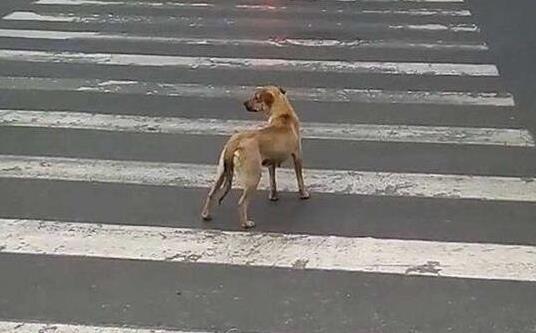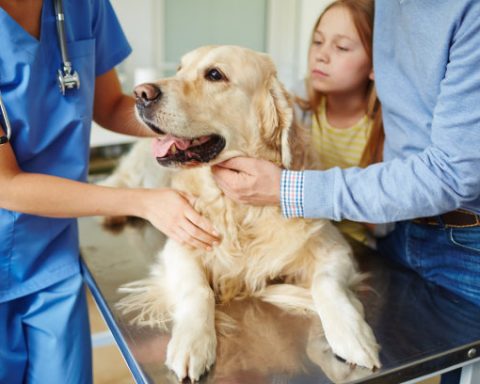- Whether the injured dog is conscious or not, remove him if he is in danger. First look for any obvious injuries, such as bleeding or dislocation. While you are performing first aid to the injured dog’s condition, have someone stop the approaching vehicle.
- If you have a second person to help, support the dog and lift it onto a blanket or coat. If you are alone, place the blanket next to the dog, hold onto the skin of the neck and buttocks, and pull the dog onto the blanket. Then lift the blanket and move the injured dog out of the injury. Be careful not to touch the wound.
- A dog involved in a traffic accident may have injuries that require urgent veterinary attention. Do not use excessive force when moving the dog. Use a blanket as a stretcher to carry the dog to the car and get it to a veterinarian as soon as possible. Make sure his neck is extended so that he can breathe.
- If the dog is in obvious pain, use a temporary muzzle to immobilize the dog’s mouth and nose before moving it. Wrap a string or scarf around the nose and tie knots under the chin and at the back of the neck.
- Even if some dogs appear unharmed, their internal organs may be injured. After moving the injured dog to a safe place, give it a thorough examination. All dogs involved in traffic accidents should be examined by a veterinarian.
- Gently touch the dog’s limbs to see if any bones are broken or misaligned. If a fracture is suspected, try not to move the injured leg. If there is a spinal injury, then use a flatbed when lifting the injured dog.
- If the dog is unconscious but breathing normally, press a finger against its dental bed and see if blood returns quickly when you release your hand. If there is rapid return of blood, there may be hemorrhage. Apply firm pressure to the wound with an absorbent pad or bandage to prevent bleeding from external tears.
- Some dogs are good at hiding their injuries by tolerating them. They are then at risk of contracting the post-accident complication of concussion, as are dogs with an outgoing temperament. Internal hemorrhaging is not obvious and is not detectable until the dog goes into shock. All dogs involved in traffic accidents should be taken to a veterinarian for examination and kept under observation for 24 hours.
Injury Determination:
- Respiratory Examination Observe the dog’s chest activity to see if it is breathing. Normally, the dog breathes 20 to 30 times per minute. The respiratory rate often increases when there is an accidental injury. Short breaths followed by a violent exhalation indicate that the diaphragm can be stubbornly damaged.
- Light Reflex Shine a flashlight into the dog’s eyes and the pupils should constrict. If the pupil does not react, the heart may have stopped beating. If the pupils are constricted, the dog may have suffered brain damage.
- Foot Reflexes Pinch the toes or the skin between the toes. If there is no response, the dog is deeply unconscious or the heart has stopped beating. If the injured dog is only mildly unconscious, it will retract its foot.
- Recognizing Shock Shock occurs when the body’s circulation stops. Shock can occur even hours after the accident. The injured dog becomes weak, breathes rapidly, has a rapid pulse beat and a cold body.
- If the shock is not from heat stroke, wrap the dog in a blanket to keep him warm. Do not wrap it too tightly and allow it to breathe easily. Also contact your veterinarian as soon as possible.
- If the dog is already unconscious, hold it upright by the neck, rattle the mouth to remove any residue from the mouth, and gently pull the tongue forward to prevent choking. This is by far the most important for short-nosed dogs.
- The injured dog may come to its senses suddenly. and become hysterical from the injury and shock. Be careful not to re-injure it by sitting up suddenly and violently. You yourself should be especially careful to avoid being bitten. If the injured dog is frightened, calm it down and keep it warm.

